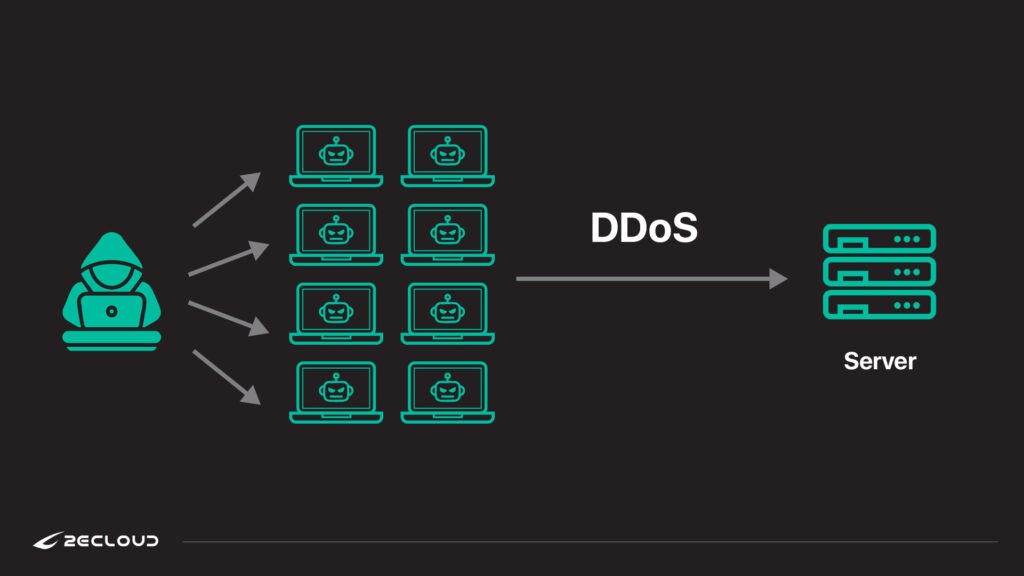DDoS protection is crucial when facing such attacks! The Distributed Denial-of-Service (DDoS) attack, also known as the botnet attack, is a type of cyberattack where attackers flood a server, website, or online service with massive amounts of malicious traffic, rendering it inaccessible. So, how can you protect your websites from DDoS attacks? What are the most effective DDoS mitigation techniques? This guide will help you quickly understand key defense strategies to safeguard your digital infrastructure.

As businesses increasingly rely on digital platforms, websites, and cloud services, the risk of cybersecurity threats like DDoS attacks continues to rise. These attacks can overwhelm system resources, causing downtime, lost revenue, and reputational damage. To counter these threats, organizations must implement a robust and proactive DDoS protection strategy. In this article, we explore best practices for DDoS attack prevention and incident response, categorized into two key stages: pre-attack preparation and post-attack mitigation.
Proactive Measures: How to Prepare for DDoS Protection.
The best defense is a good offense. Investing in DDoS prevention tools and proactive network protection can significantly reduce the likelihood and impact of an attack.
-
Optimize Network Infrastructure and Traffic Distribution
Design a scalable and redundant network architecture. Use load balancing , geographic distribution, and multi-server configurations to evenly distribute traffic. This ensures that if one node is targeted, others can maintain service availability. Also, implement multi-path internet connectivity with automatic failovers to reduce the risk of complete downtime.
-
Deploy Advanced Firewalls and Intrusion Detection Systems
Set up intelligent firewalls with traffic filtering capabilities to block illegitimate requests before they enter your network .
Integrate Intrusion Detection Systems (IDS) and Intrusion Prevention Systems (IPS) to detect suspicious activity in real-time . These systems help flag early warning signs of a potential DDoS attack and allow teams to respond proactively.
-
Utilize Content Delivery Networks (CDN) and DDoS Scrubbing Services
A global CDN caches static content on edge servers close to end users, reducing the load on your origin server and dispersing malicious traffic. Additionally, leverage cloud-based DDoS mitigation services that offer real-time traffic filtering and scrubbing, ensuring only legitimate traffic reaches your core infrastructure.
-
Conduct Regular DDoS Stress Testing and Incident Response Drills
Simulate high-volume attack scenarios to identify vulnerabilities in your network and assess your DDoS mitigation capabilities. Fine-tune firewall rules, optimize routing, and test load capacity. Maintain detailed log records and traffic analytics to support continuous improvement and forensics after any attack event.

DDoS Protection: Effective Post-Attack Mitigation Strategies
Even with strong defenses, no system is completely immune to large-scale DDoS campaigns. Once under attack, the speed and efficiency of your response can significantly impact the outcome.
-
Identify and Filter Malicious Traffic Quickly
When traffic spikes or anomalies are detected, initiate immediate traffic analysis. Analyze IP sources, request frequency, and protocol usage to identify malicious patterns. Block suspicious IPs, rate-limit requests, and update firewall rules dynamically to isolate the attack traffic.
-
Activate Emergency DDoS Response Plans and Collaborate with ISPs
Execute your incident response plan and mobilize your internal response team. Work with your Internet Service Provider (ISP) and third-party DDoS mitigation services to reroute or scrub malicious traffic. Real-time collaboration can reduce downtime and help maintain critical service uptime.
-
Strengthen Application-Layer Security During the Attack
Restrict access to non-essential services and prioritize critical business functions. Apply Web Application Firewalls (WAF), CAPTCHA verification, and request throttling to filter harmful application-layer attacks. Strengthening both network and application defenses is crucial to surviving multi-layered DDoS campaigns.
-
Post-Attack Forensics and Strategic Improvements
After the DDoS attack subsides, conduct a thorough post-incident review. Document the origin, type, and duration of the attack. Use this information to refine your DDoS response policies, improve security configurations, and train staff for future incidents. A strong cybersecurity awareness program can significantly boost overall resilience.

Conclusion: Build a Comprehensive DDoS Protection Strategy
In today’s evolving threat landscape, having an end-to-end DDoS Protection solution is essential for safeguarding your business’s digital assets and maintaining uninterrupted service. From network optimization and firewall deployment to DDoS traffic filtering and emergency incident response, every step plays a critical role in reducing your exposure to attacks. A well-structured approach that includes cloud-based DDoS mitigation, CDN integration, and post-attack analysis can dramatically reduce risk and enhance operational continuity.
If you’re unsure how to implement the right DDoS protection plan or need tailored technical support, don’t hesitate to reach out to the expert team at 2ECloud. We offer professional, customized DDoS defense solutions to help you secure your online infrastructure and stay one step ahead of cyber threats.
